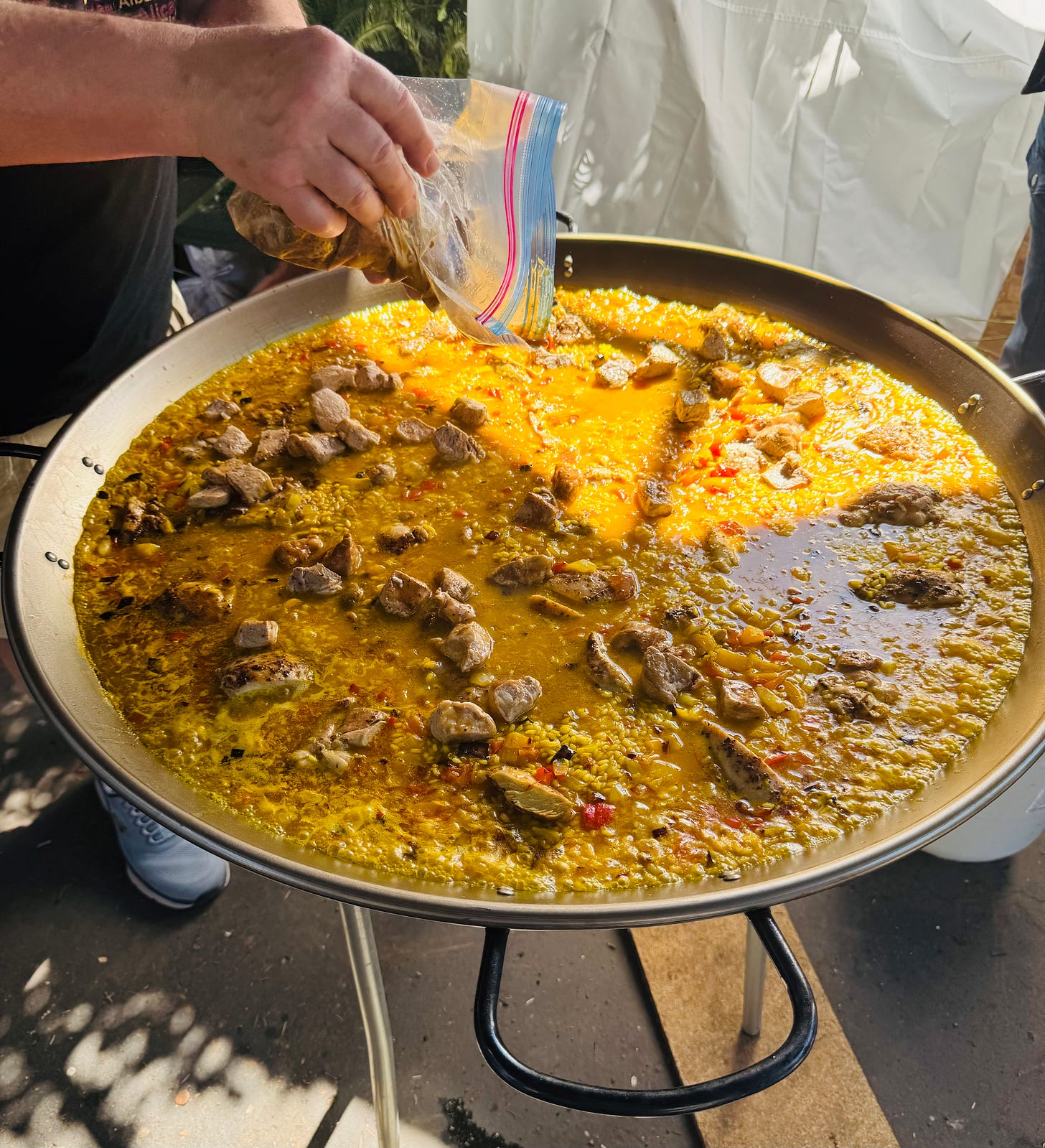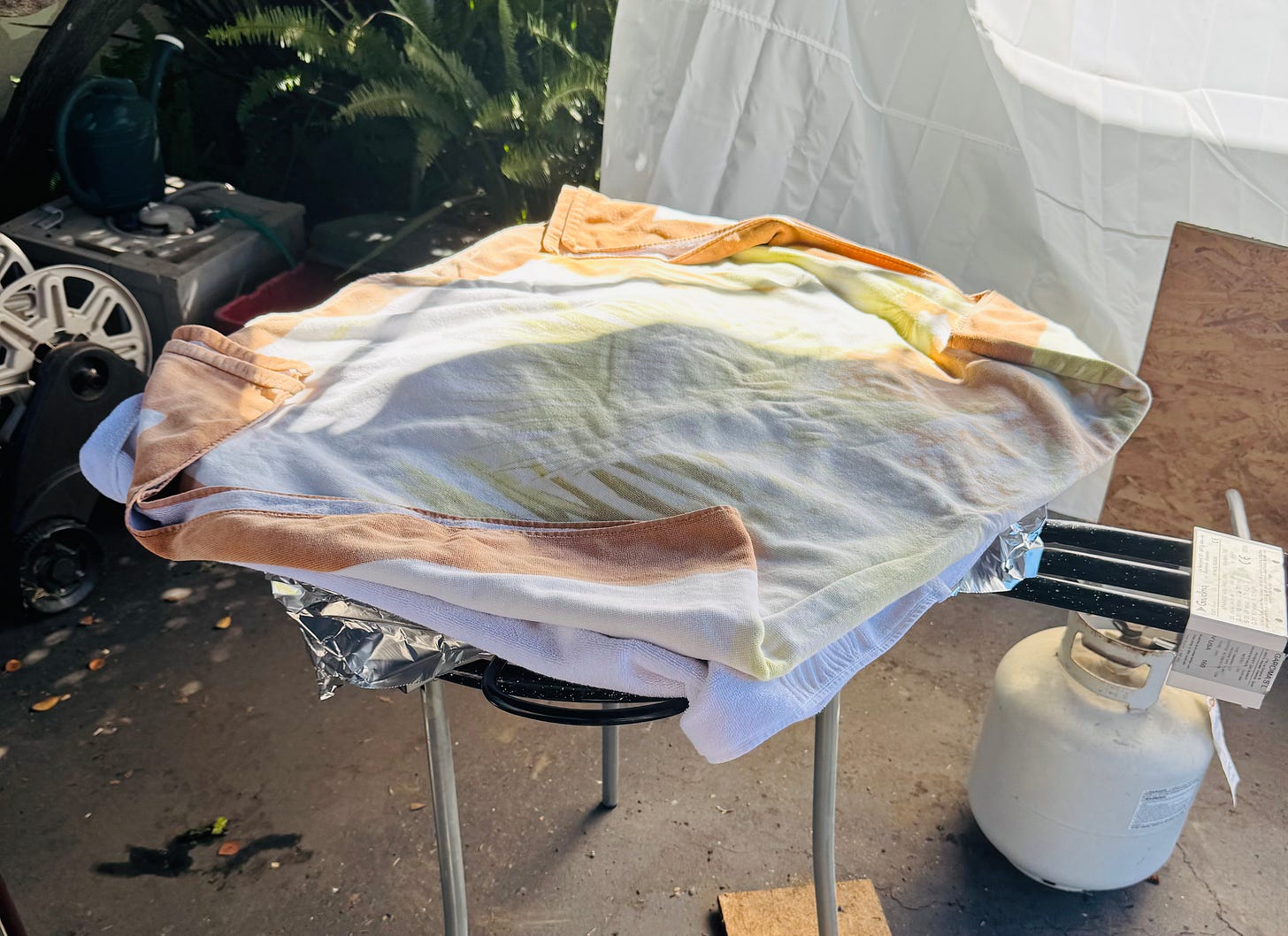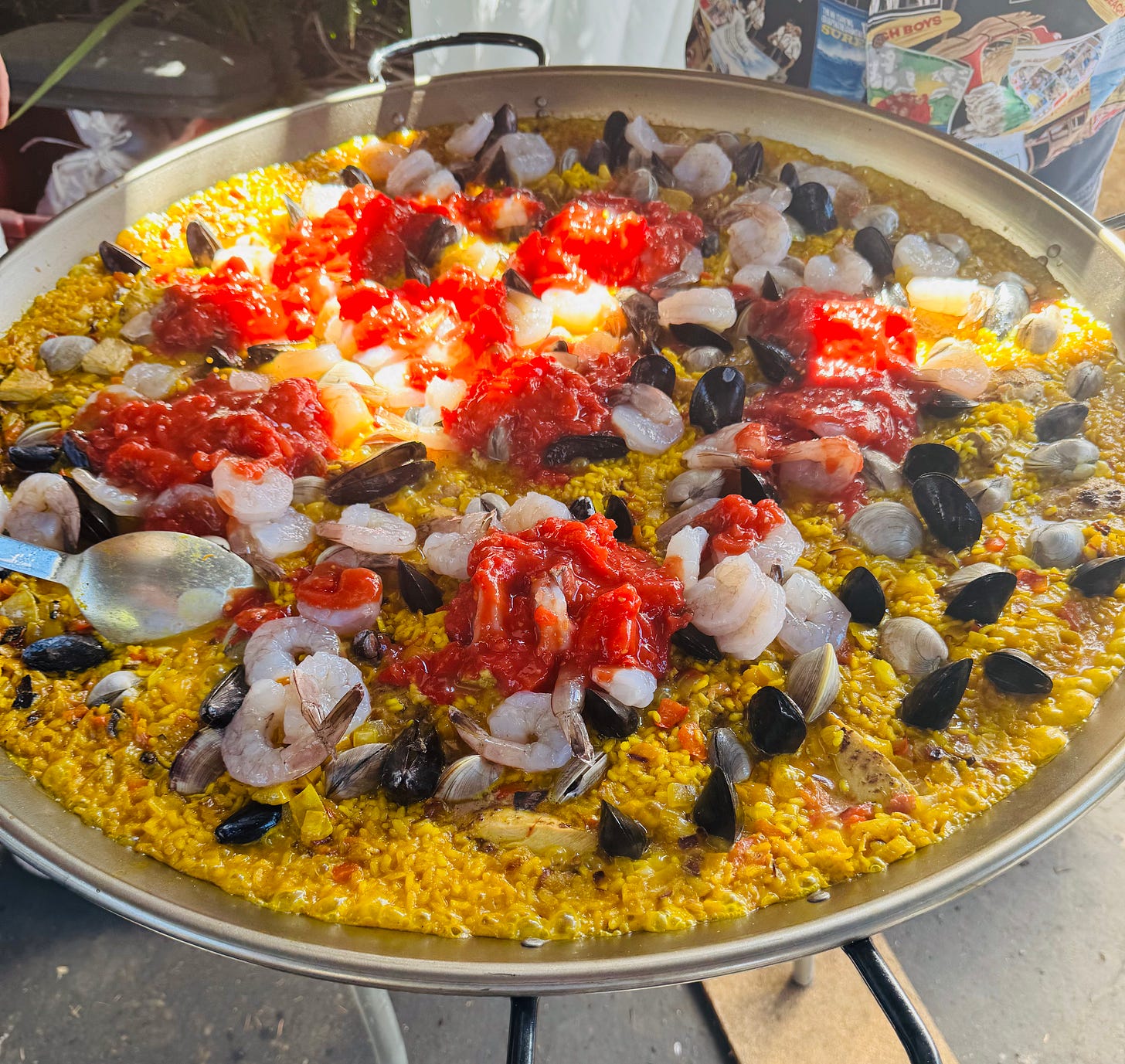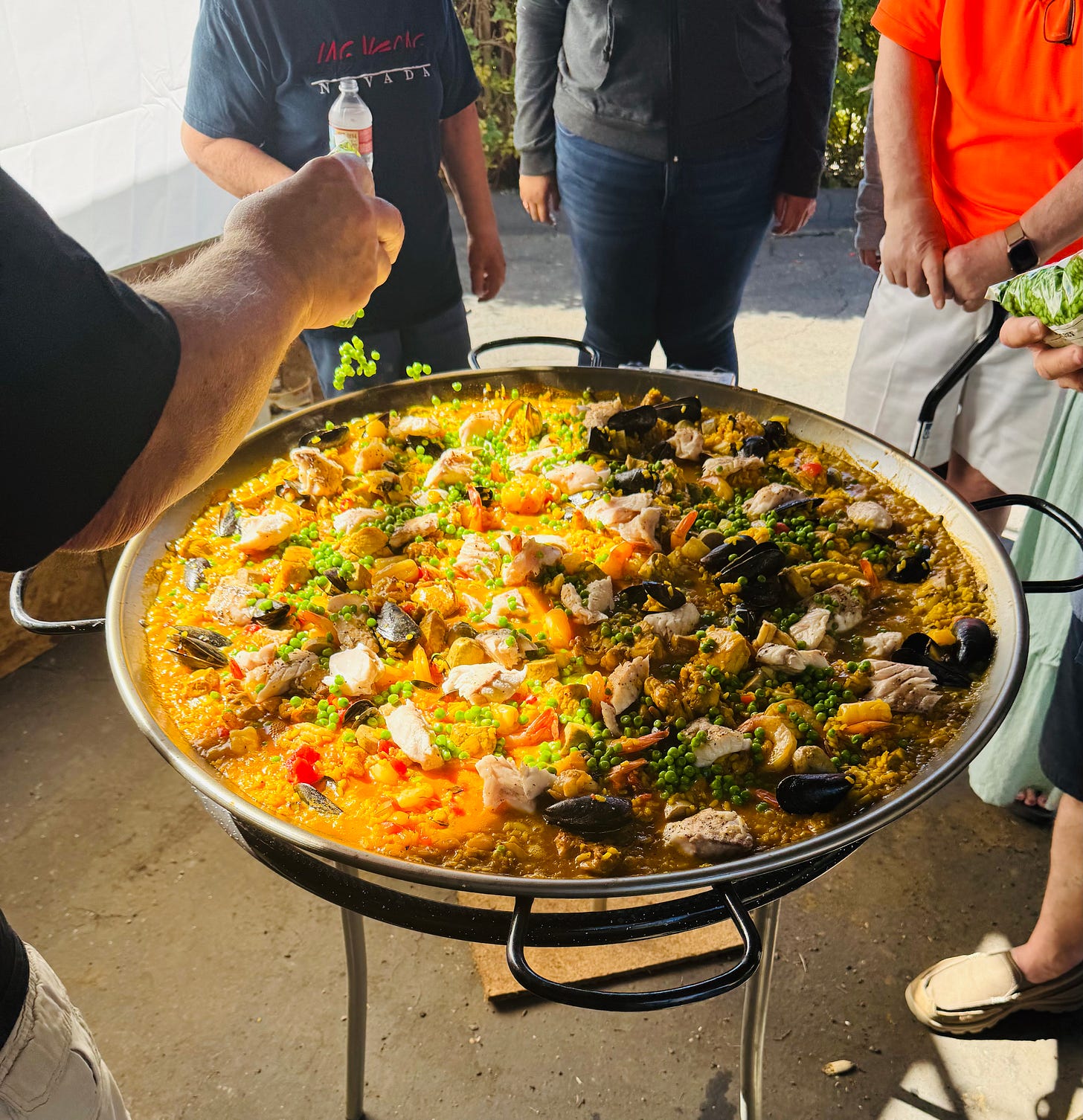Comfort Food
A moveable feast
Dear readers: this week’s article is a bit of a personal departure from my usual ramblings. But I think it is important to stop every now and again and pay homage to one’s roots. As well as to put a little more distance between me and the idea that I’m just some AI bot.
In Mexico, I have two surnames – my paternal last name, which is Leavy, and my maternal last name, which is Tay. This is the normal practice in Spain and the countries in the Americas that Spain once ruled1. My two surnames are on my Mexican birth certificate, passport, driver’s license, etc. In the United States, my last name begins and ends with Leavy. That is all that is on my U.S. birth certificate (yes, I have two birth certificates – doesn’t everyone?), U.S. passport, etc.
The Latin tradition of carrying on the family name on one’s mother’s side makes that name less likely to die out. I like that. And recently, I spent time with that not-dying-out-name mother’s side - the Tay side, my Mexican roots side.
My mother’s side of the family immigrated to Southern California from Mexico when my mother and my aunt were small children. Names like Santiago, Ana Maria, Dolores, Carlos hang as remembrances of these Mexican roots from our family tree. Some of the ancestors of my maternal grandfather and his sister (my great aunt) immigrated to Mexico from Spain. What they brought with them from Spain has receded past the reach of our family history - except for one thing: the defining, catalyzing, and most long-lived tradition of my family and it’s gatherings: a recipe for paella.
Paella, if you are not familiar, is a rice-based dish from the Valencia region of Spain. The rice is traditionally of the bomba variety, and it is typically seasoned with saffron to give it a yellow color. Other ingredients – usually seafood (especially shellfish), often sausage, chicken, pork - are cooked and added to the rice along with vegetables, garlic, onion, peppers, etc. It can be cooked in a frying pan on the stovetop, but for larger gatherings paella is often cooked on an enormous pan outdoors over an open flame.
For most of my life, my great aunt Ada was the sole guardian of the family paella recipe. My Southern California Tay family is enormous, so when we would gather the family for a paella-centered reunion, we always did the cook outdoors on a giant pan technique. Aunt Ada – Tia, actually, for few in the family used aunt or uncle – would always enlist help in preparing the dish; cooking paella for 30–50 people is a costly and time consuming exercise. But she orchestrated the preparation of the ingredients, the seasoning (what, and how much), the declaration of doneness, with the reverence that such a long-held and far-traveled family tradition warranted. She did not take her responsibility as guardian of this ancient recipe lightly: she shared a lot of the recipe, but not everything. The chance that some careless kid would wander off to college with the recipe and leave it lying around a common room was just too great a danger: some things are worth protecting, or so believed Tia.

My childhood and early adult memories are liberally spattered with paella parties. Later in my adulthood (am I an adult? I wonder...) I strayed from the family path: first it was “partying” (that’s a euphemism for something), then a bad marriage, then recovering from a bad marriage - I turned inward and found excuses not to attend most family functions. Which is a shame - my Tay family and its extensions really is a collection of wonderful and supportive people. I’m not the kind of person who looks for or holds onto regrets – but I regret having wandered away from my family for those few lost decades.
In any event, I found a way to put those bad life choices behind me. Wait a minute - I’m veering off track 🙄. This isn’t about me, it’s about the Tay paella and the gatherings around thereof. Where were we? Ah, yes; eventually, Tia grew old and began to realize that the paella recipe needed to be handed down to a member of a younger generation.
I have an uncle named Robert, Bob to us kids (am I a kid? I wonder...). He married my mother’s sister, Dolores. They bought a house in a semi-rural part of San Diego, with a large yard and a swimming pool. They had kids who were the same age as my sister and I. If there is one physical, inanimate symbol of continuity in my life, it is that house that my aunt and uncle bought and raised their kids in. My sister and I probably spent more time there than any other place that wasn’t our own homes. Because of the pool and the yard and the nice patio – pretty much all of the Tay paella gatherings happened at this house. And so it seemed only fitting – in Tia’s eyes, anyway (and honestly, in everyone else’s) – that the Tay family paella recipe should be handed down to my uncle Bob. Now why not to an actual Tay? Bob married into the Tays, but his passion for the whole paella process, and his generosity in hosting the gatherings, was an acknowledged fact. It is fitting that he should have been entrusted with the recipe, and he stewarded it into the 21st century with warmth and grace.
Tia has passed on. So too has Bob’s wife, my aunt Dolores. So too has one of their daughters, my cousin Renée. My uncle still lives in that house on a hill in Eastern San Diego county. For over half a century that house has served as the de facto gathering spot for the Tay family, et al. With paella liberally sprinkled throughout.
Lest I leave the impression that we consumed paella every other Friday night, I’d like to re-iterate that paella for our family was both an expensive and a hugely time-consuming enterprise. And, paella isn’t something you want to “consumerize” by firing it up so often that people start to forget the specialness of it. In our family, these paella events occur once every five, sometimes ten years.
And so came to pass one of those quinquennial2 or decade markers, as the Tay family grew restless for what will likely be the last paella gathering at my uncle’s home. The photos herein mark some of the evolution of that recent gathering, from the perspective of the paella pan. My uncle now is well in his eighties, and like Tia before him, he realized at this latest gathering that it was time to pass the recipe on. Acknowledging the familia diaspora (California, Mexico, Texas, Virginia, Illinois, British Colombia), he spread twelve copies of the recipe on the patio table, each one tucked neatly into a cream-colored folder. The Tay paella too, it seems, is experiencing its own diaspora.

As I am no heretic, there are no photos of the recipe here. But I’ll gladly promote myself from paella sous chef to chef de cuisine, recipe in hand, and pass you a plate if you happen to find yourself on a particular calle, in a particular pueblo, in Mexico.
Provecho.
Except for Argentina, don’t ask me why.
That’s a fancy word for a span of five years.








Oh what an incredible post, Mike! And the photos as it's made are great. Love paella. What a cool heritage, great memories for you. Paul occasionally makes it as he hitched around Spain when young and loved it b/c it tasted great and was the cheapest thing on the menu (!.) Mere pesetas. I am lucky to be the recipient of his love of that beautiful dish you so well described. With photos!
Yuuummmm!! I hope you post about your first time making it as chef de cuisine. I am glad you are back in the family rythm, having lost some decades. Family roots are with us, whether we like it or know it, and I imagine it felt good to get back to the paella and all that it represents to your clan!